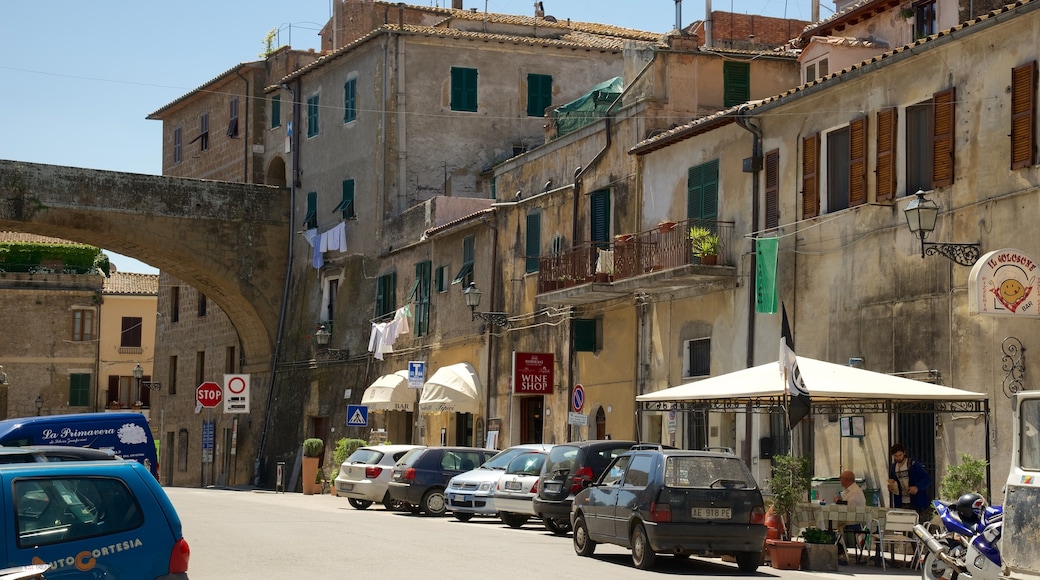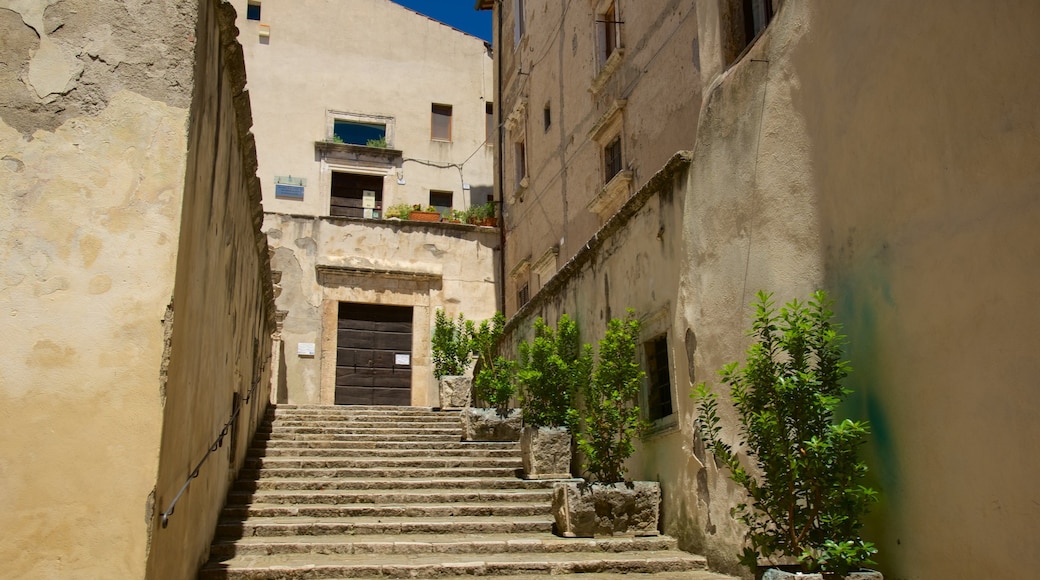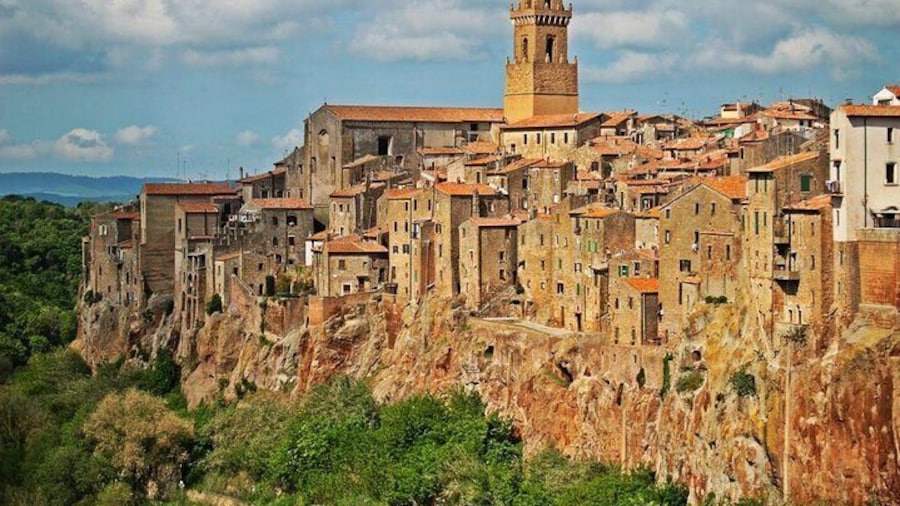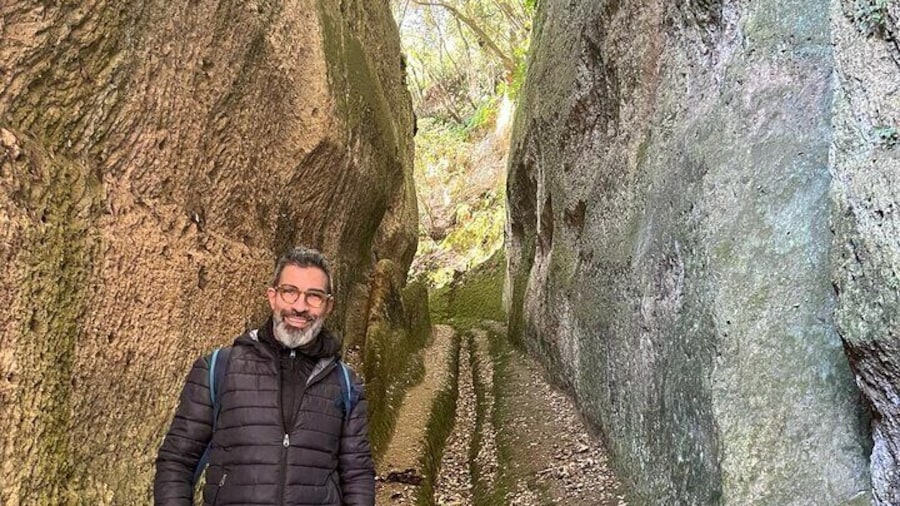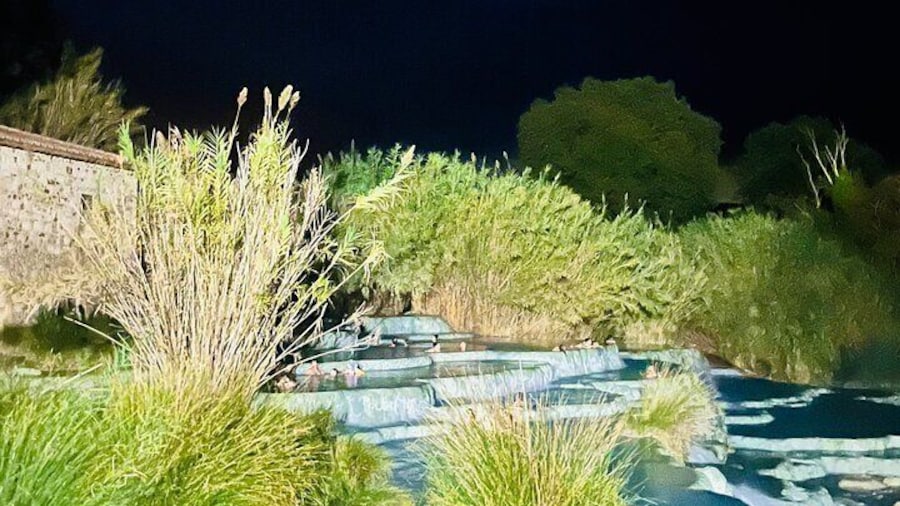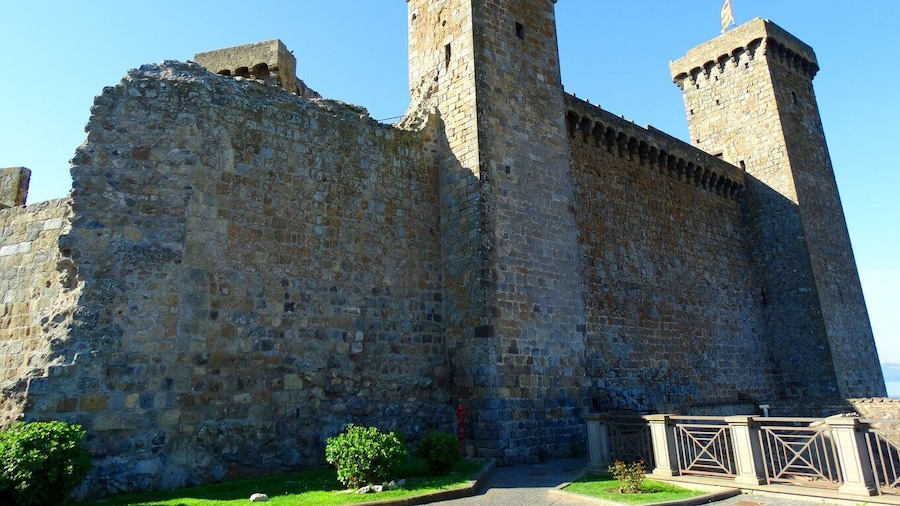The small medieval town of Pitigliano is an extraordinary sight, rising up from a volcanic tuff ridge at around 1,026 feet (313 meters) above sea level. From a distance, its buildings appear to have been carved from the same rock. Wander the narrow streets, visit the old Jewish quarter and go down into cave-like tombs that are more than 2,000 years old.
There is a lot of history to explore in Pitigliano’s ancient buildings and structures. Tour the Palazzo Orsini, a palatial fortress from the 14th century. Today, the building houses the Museo Palazzo Orsini and its collection of ancient religious art. It also contains the town's archeological museum, which is decorated with 15th-century frescoes. Look at vases and other objects that were excavated from the local area, some of which date back to the Bronze Age.
Walk along the 16th-century aqueduct and take in the stellar views of the countryside beneath you. Study the Baroque features of the Cathedral of Saints Peter and Paul and visit the 12th-century Church of Saint Rocco. Explore the town’s tunnels and caves, which were built to form tombs and cellars.
Pitigliano is also known as Little Jerusalem because of its Jewish population, which first settled here in the 15th and 16th centuries. It grew in size as more Jews sought refuge from persecution elsewhere in Italy. Visit the old Jewish Quarter and see the synagogue, the ritual bath hall and the kosher cellar.
Just outside the town’s walls is Orsini Park. Enjoy a stroll through this leafy expanse, which encompasses waterfalls, forest caves, monuments and statues. It is also known as the Knoll of the Strangler after the local tale of Count Orsini, who is said to have strangled his wife and thrown her off a bridge in 1575.
Pitigliano’s ancient streets and structures make for a great day out during a tour of Tuscany. Arrive by car or public transport. Train stations at Grosseto and Orbetello have bus connections to the town.


